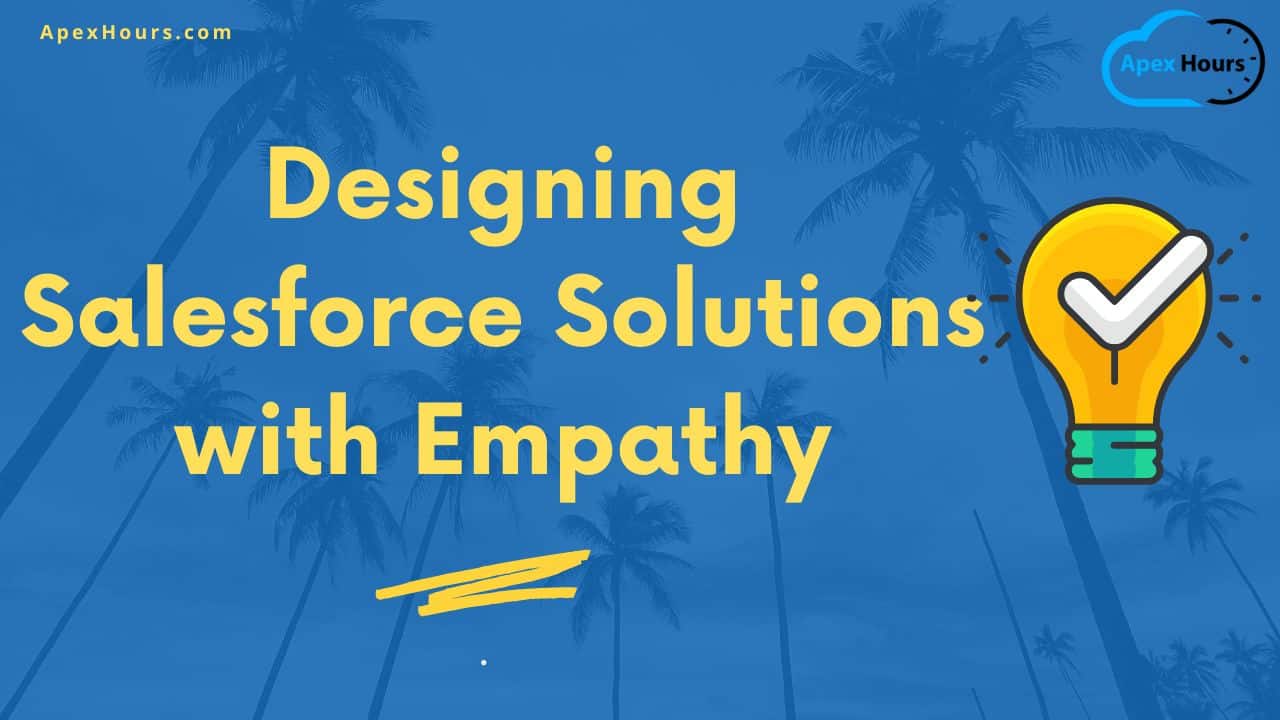For any digital transformation to be a success, the pivotal decision making comes from the people, culture, processes, and technology. When a customer decides to go for a digital transformation- it’s the “change” they are trying to bring in- to the ways of working, gaining acceptance from their internal and external customer base, adoption, and modernization. Let see how to Designing Salesforce Solutions with Empathy.
Its imperative to understand your customer base to be able to successfully “Design” for them. Strategy design and design thinking talks about multiple angles that come into play when we are embarking on a Digital transformation journey for your customer. I will share here a step-by-step guide based on my experience while designing for large, complex ecosystems and being able to drive the transformation successfully for them.
1. Know your customer and know them WELL.
Getting a complete insight into what your customer does, what areas/ channels they operate on, what’s their revenue model, what’s the expansion plan, how they want to collaborate with their resellers, partners, vendors, etc.- All of these are some of the important points to KNOW when you are “Discovering” about your customer who you want to “Design” your system for.
Understanding customer intent and plan is important to decide on the strategy you would take to design their systems. Some customers could look up to the implementation partners to just give “JUST IN TIME” approach- where they don’t expect the partner to design for the whole system- but to only tackle the problem
areas and design just for it.
Another approach the customer could take is- “BIG BANG” approach- where they have decided to design the whole system from bottoms- up- where you as an implementation partner needs to know in and outs of the existing implementation and design solutions accordingly.
There are multiple exercises done to know your customer-
- Business process canvas
- Organizational alignment
2. Understand which teams are your “Customers”?
This is one of the most crucial steps while designing successfully for your customer. Within the organization, there could be different business units, teams- like business users, partners, implementation teams, testing teams, process teams, design teams, end users who could have a separate set of requirements/ expectations from this digital transformation program.
There are multiple activities which are carried out to extract the right set of requirements to successfully design for your “Customers”.
- Stakeholder Analysis
- Jobs to be done.
- User Interviews
- Business process mapping
3. Understanding your customer “pain points”.
This is the most important step to really design with “Empathy”. Unless you understand the challenges, your customer teams are facing in their day in day out
activities- there is no way you could design correct solutions and approaches for them.
Some of the analysis that’s done to know your customer issues and help them to eradicate those- either by designing/ redesigning the processes or by designing/ redesigning the systems through technology fixes are-
- Challenge Framing
- Consequence Analysis
- To-be process mapping
- Empathy mapping
- Heuristic Analysis
4. Thinking of the system “Holistically”.
Point in time approach, either during discovery, design or implementation could have HUGE negative impact on the system performance. Its important to understand the goal of your transformation from people, process, technology, and applicability perspective.
Once you understand how the different processes (that you are designing for) are inter twined- between different teams (consider handovers, approvals, sharing requirements), different users, different technical platforms (considering the integration requirements- real time, batch, bulk), different business requirements- its impossible to suggest the right way forward.
In the agile implementation world- you could ensure you are recording the requirements completely by agreeing upon the below-
- Acceptance Criteria
- Definition of Done
- Branding
- Usability Design
In waterfall implementations- this agreement could be gathered during the milestone definitions, completion and sign off activities.
5. Go one step further.
Designing what’s asked for, is a MUST HAVE. However, knowing your customer and understanding that they need help and giving them that comfort that you are thinking on improving the system- in terms of performance, making it more scalable, making it more user friendly- by designing, redesigning screens, processes- gives that “Customer Delight”. Customer delight should be the aim for any digital transformation. Getting regular feedback from your customer around how they finding your system is an important step to improving the system usability.
Some of the additional angles/ approaches while designing system successfully could be as below-
- Sustainability Design
- Accessibility Design
These were a few important steps that every consultant, architect, designer, developer must think of while designing system for your customer- this would ensure customer empathy, good customer relationship, growth, and customer success for sure!




